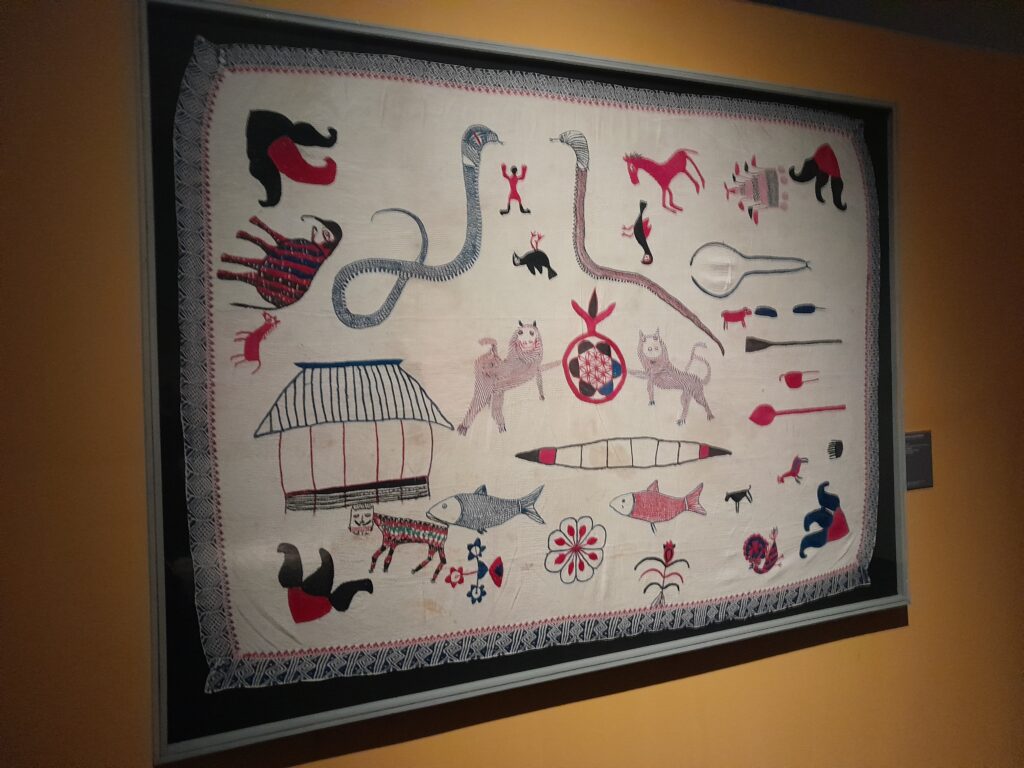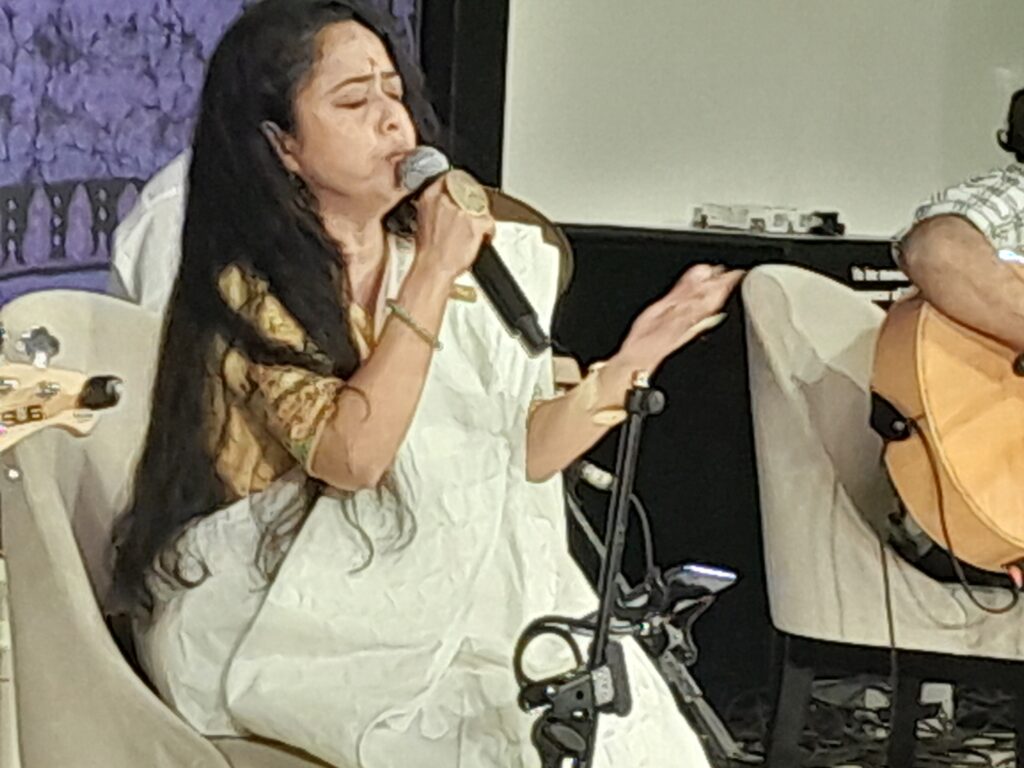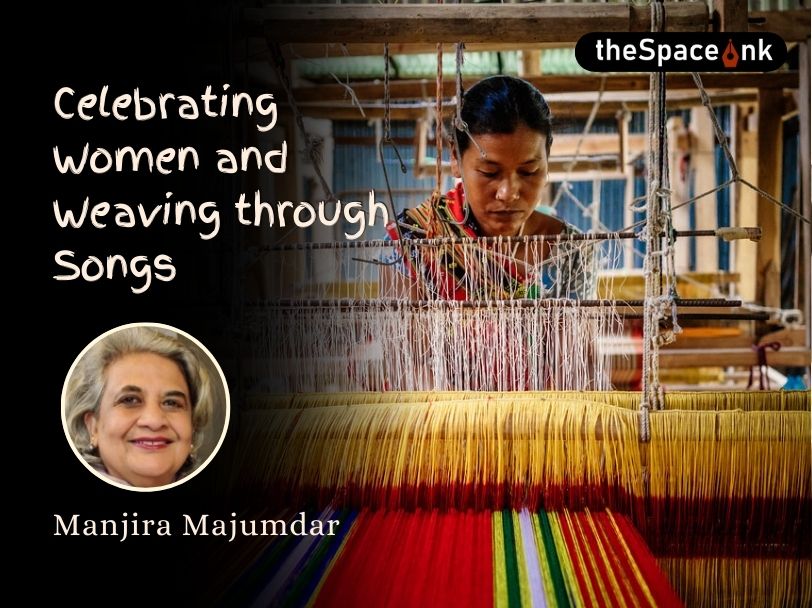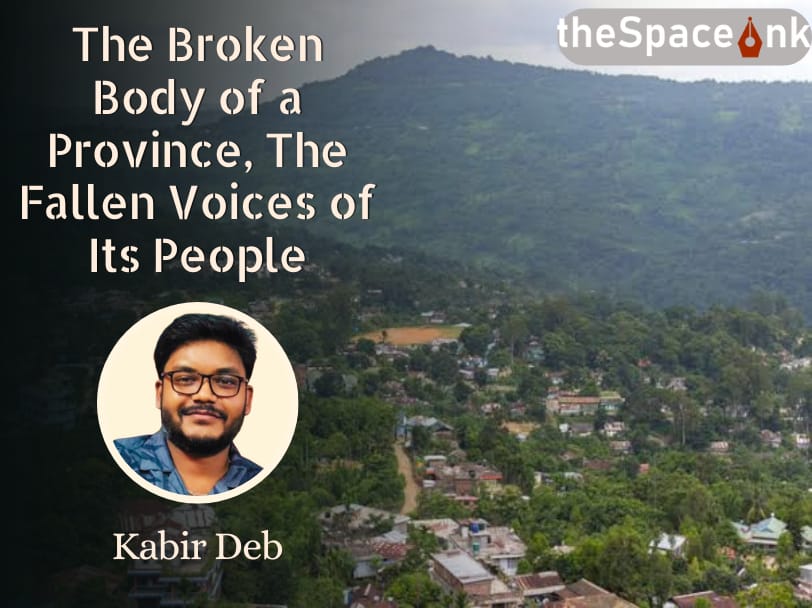The very first folk tale I heard from my grandmother was the tale of Shukhu Ar Dukhu.
Once upon a time, in a village in Bengal, there were two little girls by these names. Dukhu, as her name suggests, was the daughter of a poor widow who spun thread on the charkha or spinning wheel for a living. Shukhu was their rich neighbour.
Once while drying the threads before spinning, a gusty wind blew two little balls of thread away. As they were very poor, Dukhu had to retrieve these at any cost and while chasing, she found herself on the moon where chandburi (the woman in the moon) was already engaged in spinning bits of clouds herself.
We all know the moral of the story which has a subtext of taking care of our plants and animals. But this is one of the oldest folklores featuring girls for a change, signifying that women in weaving, was a reality a long time ago.
The Indian textile story is a huge one. Bengal textiles from both sides of the border were one of the main exports to the west from which coffers were filled. It still continues to be the case.
Men weave on the handloom. It symbolizes power. Women have always done the preparatory work like spinning of the yarn as part of the work leading up to the final weaving. Women combine this work with their household chores but spinning on the charkha was an activity by itself for weaving coarse garments (khadi) and existed long before hand and power loom weaving emerged.
Women are not the negotiators in business deals in the weaving industry thereby they are greatly exploited. They are doubly marginalized as their labour is taken for granted by their own men folk and the world outside.
Stories and songs often provide a real picture where mere data cannot. These also document certain underlying economic activities in society.
Also Read: Celebrating Immigration and Immigration Literature
“Any activity that is carried out by a group of people has a rhythm of its own, the lamentations of a group set to rhythm become poetry and when music is added, they become songs” says Sangeeta Datta, independent filmmaker and writer who presented a programme on songs of weaving in the city recently.
Held as part of a month-long series of programmes on textiles of Bengal, organized by the Weavers Studio Resource Centre‘s entitled “Textiles From Bengal – A Shared Legacy”, this particular musical programme brought down the curtains on an enriching exposition, which included seminars, talks and various presentations on textiles. The use of textiles in Bengali films, the Thakurbari and Shantiniketan’s contributions towards designs and textiles were some of the other highlights at the Kolkata Centre for Creativity (KCC).

One of the weaves exhibited at KCC
The exhibition on the weaves of Bengal is still on at KCC. “Songs of Weaving” on February 22 evening saw a packed auditorium of audience swaying to the music of folk songs as Sangeeta presented Dipannita Acharya of Folk Foundation. With her full-throated voice, Dipannita rendered beautiful weaving songs from across the country. She also sang a doha as composed by the mystic Kabir who was a weaver by caste.
Folk songs of weaving, therefore, combine artistry, culture, emotion, traditions, painting vivid pictures of the daily lives, beliefs, struggles and joys of the people, in this case, women spinners in the weaving communities.
If we stop to think, men have their own sorrows, women have their tears. Dipannita took us through various parts of the country with her special charkha songs of Rajasthan, Punjab and Bengal to throw light on the weaver life in general. For example, a song from Pabna was about a young married woman going to a taanti (weaver) to ask him to weave a special sari for her, and the young male weaver asks her colour and design preferences in a mood that is clearly flirtatious. It transforms into a ballad between the two.
Dipannita who researches for folk songs across the country also sang a recent Durga Puja theme song. Called hazaar sutor gaan it featured the chandburi still spinning away without any remuneration or reward, which reflects the unpaid and unacknowledged labour of women. There are so many other songs such as Komola or Golapi Sundari who are but women in these beautiful coloured saris.

Singer Dipanwita performing “hazaar sutor gaan”
The Indian textile story is a huge one. Bengal textiles from both sides of the border were one of the main exports to the west from which coffers were filled. It still continues to be the case. The various weaves of Bengal such as baluchari, jamdani etc are what legends are made of but linkages with livelihoods will throw up various facets of the industry from time memorial, which are clearly stories of exploitation and oppression. Dyeing, printing, embroidering and the various techniques involved are the ancillary industries employing thousands of women.
Designers and master craftsmen are engaged to make textiles a much coveted fashion item and the revival stories are much to celebrate. But with any economic activity that involves women, much still needs to be done in recognizing women’s labour, which data reveals is strangely falling off the labour map in South Asia. This piece written on International Women’s Month is a homage to that.
Image Courtesy: Author, Flickr
Weaving
A masters' in Comparative Literature from Jadavpur University, Manjira Majumdar has dabbled in journalism, teaching and gender activism. She shares her love for cinema, books, art and four-legged creatures with her family consisting of a husband and two daughters.








